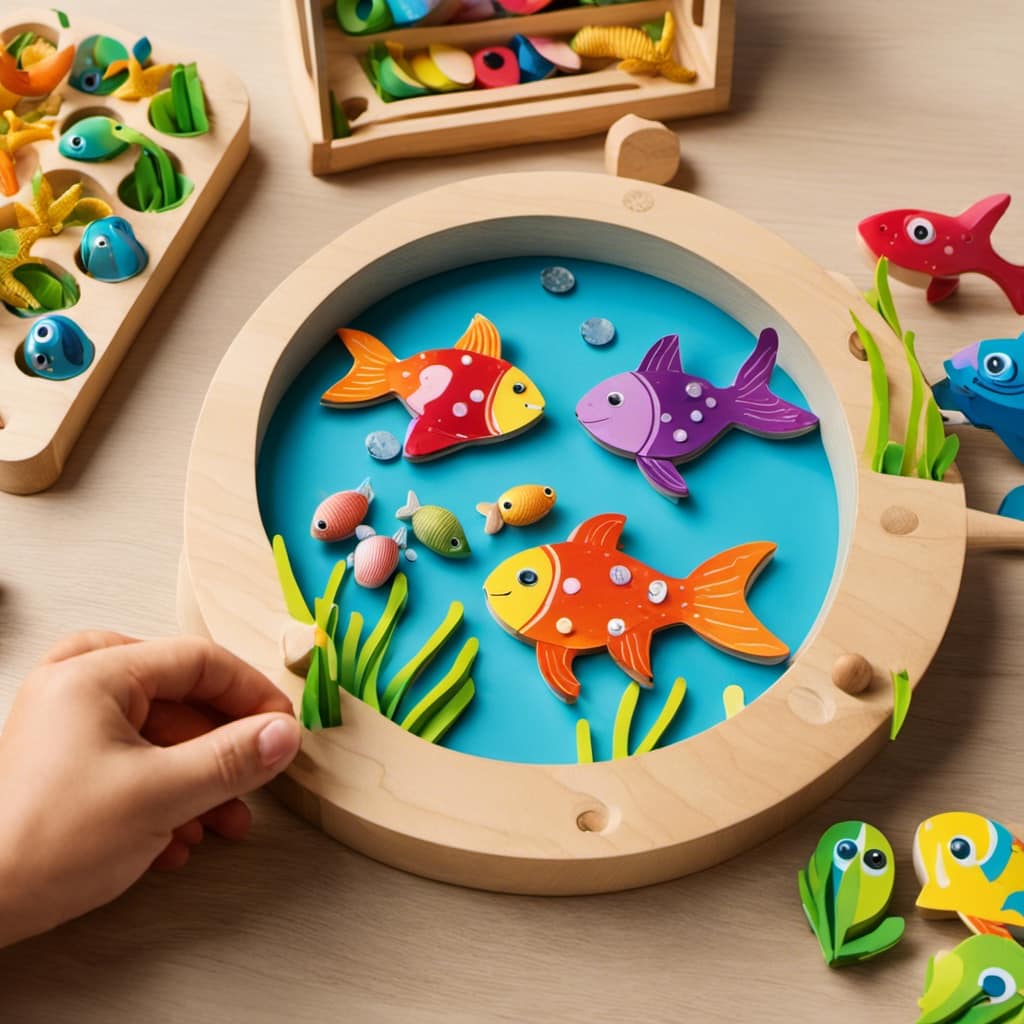To present a Montessori dressing frame like a ProBusiness, set up a calm, organized space and approach the activity with confidence and clear guidance. Use simple language, demonstrate each step slowly, and narrate your actions to guarantee the child understands. Encourage independent attempts, offer gentle guidance, and celebrate progress to boost confidence. Maintain patience, keep movements deliberate, and gradually foster independence. If you keep practicing these techniques, you’ll master the art of professional and effective presentation.
Key Takeaways
- Prepare a quiet, organized environment and sit at the child’s eye level to foster engagement.
- Use simple language and demonstrate each step slowly, narrating actions clearly.
- Model deliberate, calm movements while showing how to grasp, align, and fasten each element.
- Encourage child practice with gentle guidance, celebrating progress and emphasizing patience.
- Repeat demonstrations as needed, gradually reducing assistance to promote independence and confidence.

Presenting a Montessori dressing frame effectively sets the foundation for a child’s independence in dressing. When you approach this task, your role as a parent involves more than just showing the object; it’s about guiding the child through a series of deliberate presentation steps that encourage confidence and skill. Your active involvement is key to fostering a positive learning experience. Begin by choosing a quiet, distraction-free environment where your child feels comfortable and focused. Before starting, gather all the materials needed, ensuring everything is clean, organized, and within easy reach. This preparation demonstrates respect for the process and models organization.
When you’re ready, sit at your child’s eye level to create an engaging and approachable atmosphere. Introduce the dressing frame with a simple explanation, such as “Today, I’m going to show you how to use this dressing frame to practice putting on clothes.” This initial step helps your child understand the purpose of the activity. Next, demonstrate each step slowly and clearly, narrating your actions as you go. For example, if you’re working with a frame that has a buttoning activity, show how to grasp the button, align it with the buttonhole, and then fasten it. It’s important to keep your movements deliberate and calm, emphasizing the sequence so your child can observe and imitate. Incorporating visual guidance can enhance understanding and retention.
After demonstrating, invite your child to try. Offer gentle guidance if needed, but avoid taking over. Instead, give them plenty of opportunities to practice each step, encouraging independence. Reinforce success with positive feedback and patience, acknowledging their efforts regardless of the outcome. Repeat the presentation steps as many times as necessary, ensuring they gain confidence with each attempt. Throughout the process, maintain a relaxed and encouraging tone, emphasizing that making mistakes is part of learning.
Parent involvement during these presentation steps isn’t just about showing how to use the dressing frame; it’s about fostering a sense of accomplishment. Your calm, supportive presence helps your child feel secure and motivated to master these skills. Remember, the goal isn’t perfection but progress. As your child becomes more familiar with the dressing frame, gradually step back to allow them more independence. By consistently applying these presentation steps with patience and involvement, you help your child develop not only dressing skills but also confidence and autonomy that will serve them well throughout life.
Frequently Asked Questions
How Long Should I Practice Each Dressing Step With My Child?
When practicing dressing steps with your child, focus on progress rather than perfection. Practice patience and give your child enough time to master each step, which can vary from a few minutes to longer sessions. Keep sessions short and positive, and celebrate small successes. Remember, consistency is key, so practice regularly while respecting your child’s pace. Over time, you’ll see improvement as they gain confidence and independence.
What if My Child Struggles With a Specific Dressing Task?
Imagine your child’s confidence growing as they master dressing tasks. When they struggle, stay patient and use motivation strategies like encouragement or breaking the task into smaller steps. This builds their patience and resilience, making learning fun rather than frustrating. Remember, persistence pays off—your calm support boosts their motivation, helping them conquer challenges at their own pace. Keep encouraging and celebrating progress, even if it takes time.
How Can I Make the Dressing Frame More Engaging?
To make the dressing frame more engaging, add colorful accessories that catch your child’s eye and spark curiosity. Incorporate interactive storytelling by creating fun scenarios around each dressing task, making it feel like an adventure. Use lively voices and gestures to bring the stories to life, encouraging your child’s participation. This approach keeps their interest high and transforms learning into an exciting, hands-on experience they’ll want to explore repeatedly.
When Is the Right Time to Introduce the Dressing Frame?
Timing considerations are key; you want to introduce the dressing frame when your child’s developmental readiness shines like a beacon. Watch for signs of independence, fine motor skills, and interest in dressing activities. Usually, around 2 to 3 years old is ideal, but every child is unique. Trust their cues, and when they show curiosity and coordination, that’s the perfect moment to gently start, helping them build confidence step by step.
How Do I Adapt the Presentation for Children With Special Needs?
When adapting a Montessori dressing frame for children with special needs, you should consider their individual abilities and needs. Use sensory accommodations, like textured or visual cues, to support understanding. Incorporate adaptive tools, such as zipper pulls or button aids, to make dressing easier. Break the presentation into small steps, offering extra guidance and patience. This personalized approach helps children develop independence while respecting their unique learning styles.
Conclusion
Now that you know how to present a Montessori dressing frame like a pro, you’ll see your student gain confidence and independence. For example, imagine a child struggling with buttons, but after a few guided sessions, they’re confidently dressing themselves for the day. With patience and clear demonstrations, you’ll foster their skills and pride. Remember, your supportive approach makes all the difference in helping children master these essential life skills.











